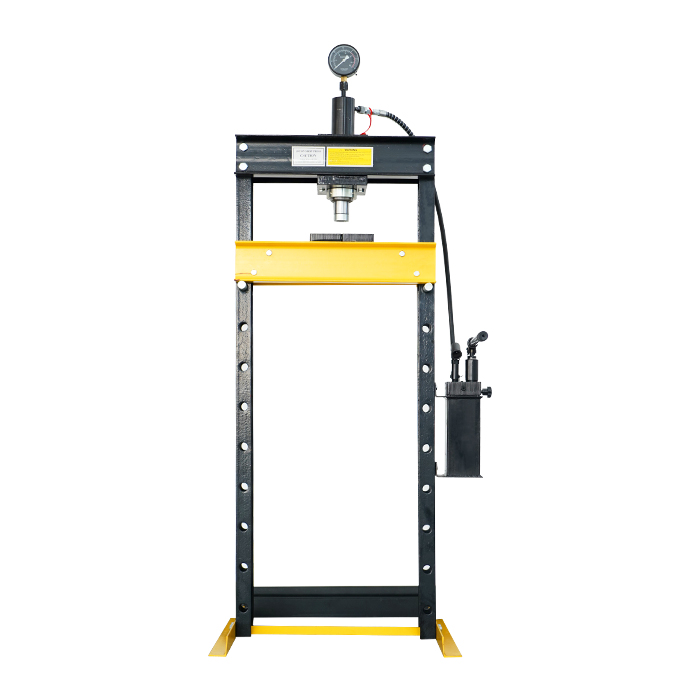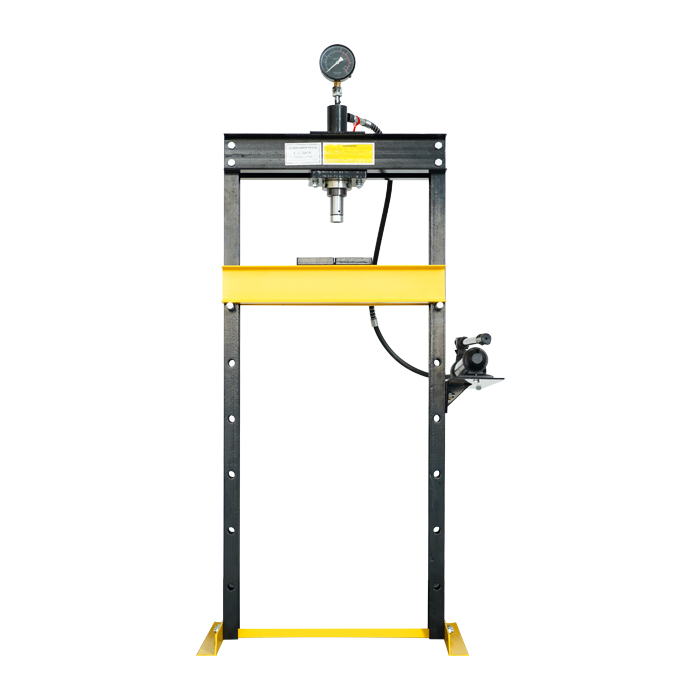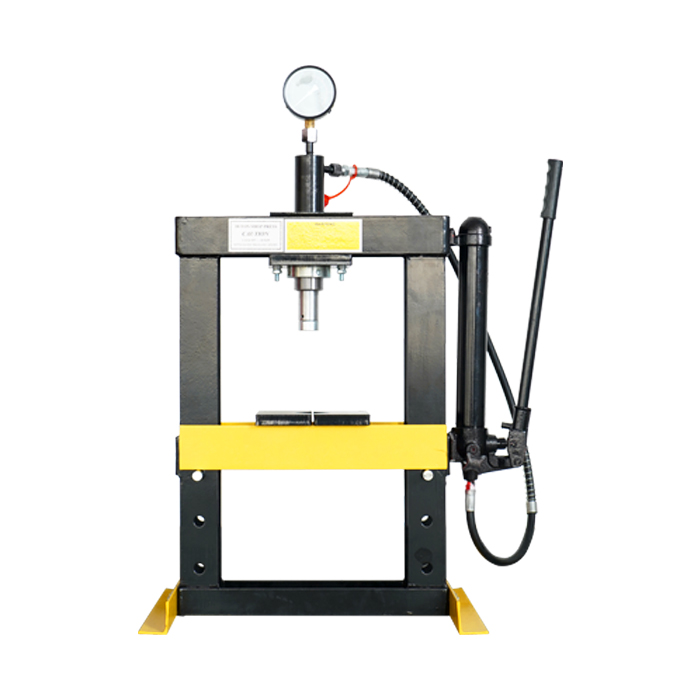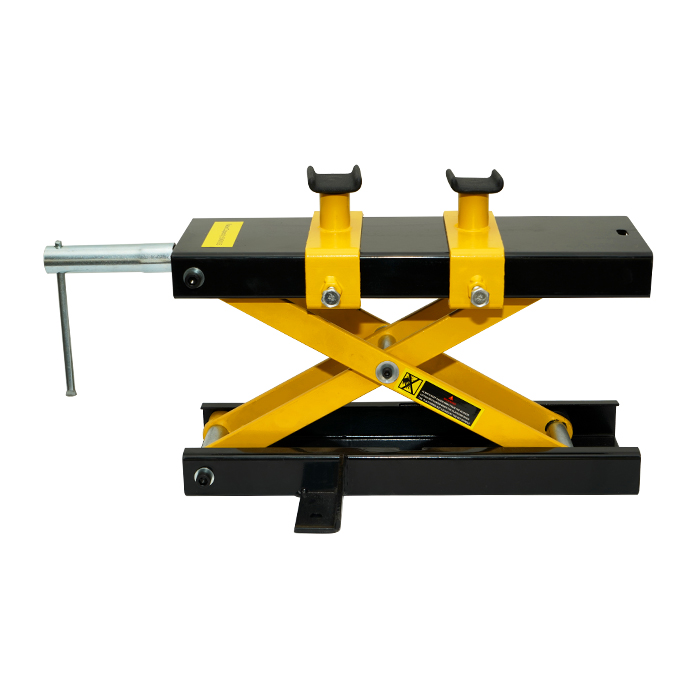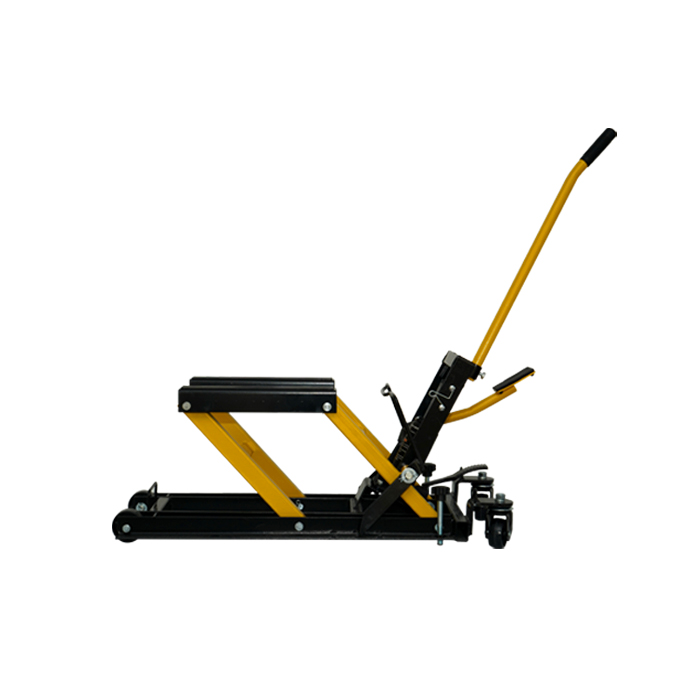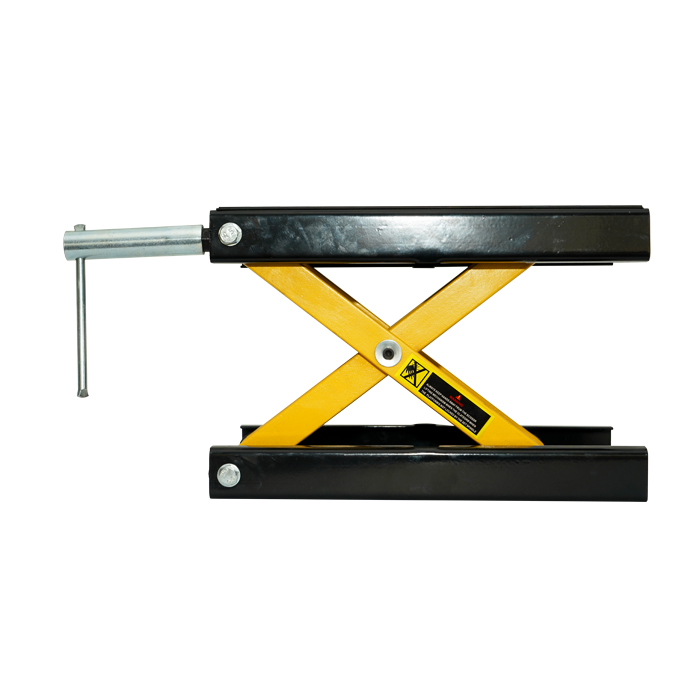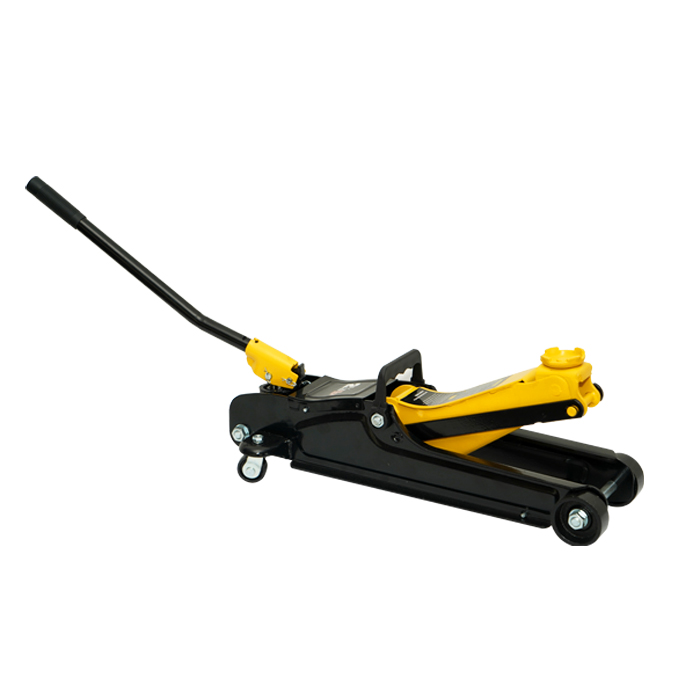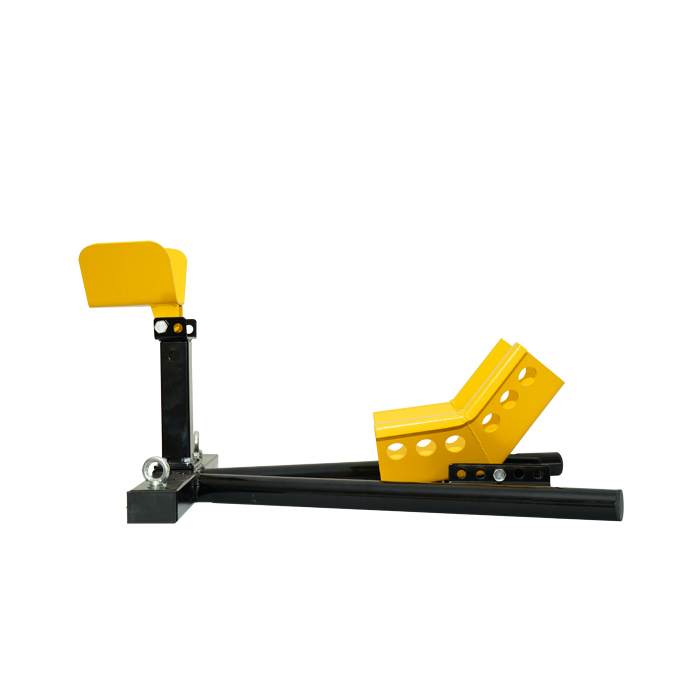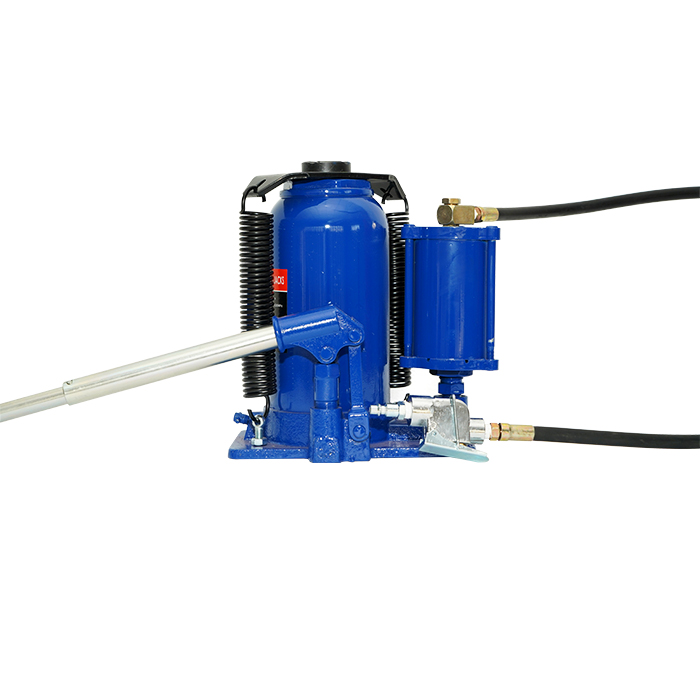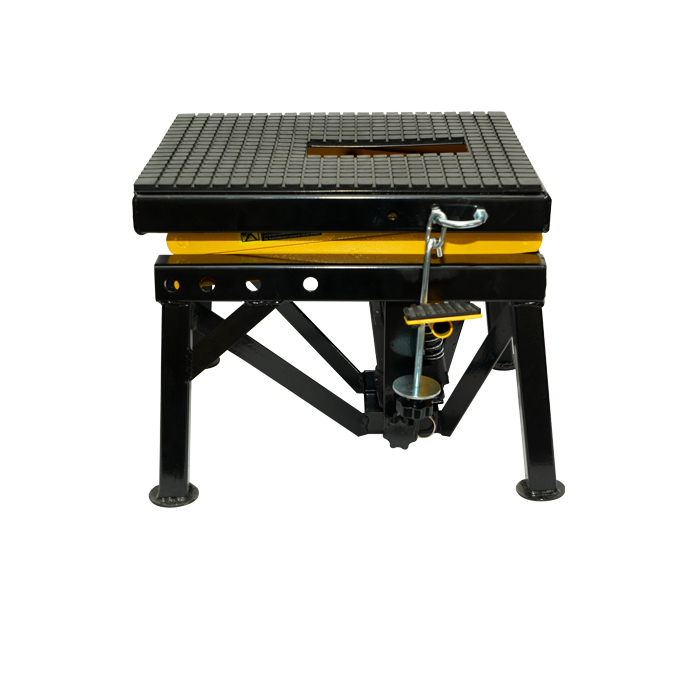How is the balance system of the motorcycle lift designed?
In order to control and compensate the position error of the motorcycle lift, the travel limit switch is set at the lower limit of the two cylinders, so that after completing a stroke, the two pistons can automatically adjust the position error to ensure that each restart is performed. Start at zero position to meet the position accuracy condition.
The load pressure feedback principle can compensate the flow change caused by the load change to achieve a new balance. However, it will not automatically compensate the accumulated position error in the dynamic process of load change, and can only control the flow distribution.
The main body weight of the motorcycle lift is about 1200kg, and the partial load is 300kg. When the load rises, the load pressure feedback in the hydraulic system reaches a new balance and rises synchronously. Therefore, due to light load, the piston at the rear of the vehicle will not rise faster, and the piston at the front of the vehicle will not rise slowly due to heavy load.
Under the condition of unbalanced load, balance the synchronous rise and fall, realize unique functions, overcome the noise of vehicle body overturning or shaking, move steadily without noise, and realize automatic network operation under the control of microcomputer system, with very good results. Design requirements.
The distance between the two cylinders of the motorcycle lift is 2.5 meters, the lifting height is 1.2 meters, and the front of the car is 300 kilograms heavier than the rear of the car. The two pistons rise and fall under eccentric load and are balanced and operated. According to this special requirement, an equal flow shunt collector shall be used to control the action balance. When the diverter valve is connected to the oil circuit, the inlet pressure is divided into two branches, which enter into two different chambers through two identical fixed holes, and then the variable orifice is connected to two parallel cylinders. Place of import.
- Home
- ABOUT US
-
PRODUCTS
- New Product Jack
- MOTORCYCLE WHEEL CHOCK STANDS
- MOTORCYCLE STANDS
- MOTORCYCLE LIFT TABLE
- MOTORCYCLE QUICK LIFT
- MOTORCYCLE DOLLY
- TYRE CHANGER
- SHOP PRESS
- ENGINE CRANE
- PICK UP CRANE
- ENGINE LEVELER
- ENGINE STANDS
- SPRING COMPRESSOR
- PULL RAM
- RAMP
- TRANSMISSION JACK
- AIR JACK
- SERVICE JACK
- HYDRAULIC PORTABLE REPAIR KITS
- PIPE BENDER
- HYDRAULIC TROLLEY JACK
- HYDRAULIC FLOOR JACK
- JACK STANDS
- FARM JACK
- CREEPER
- news
- contact us

 English
English 简体中文
简体中文